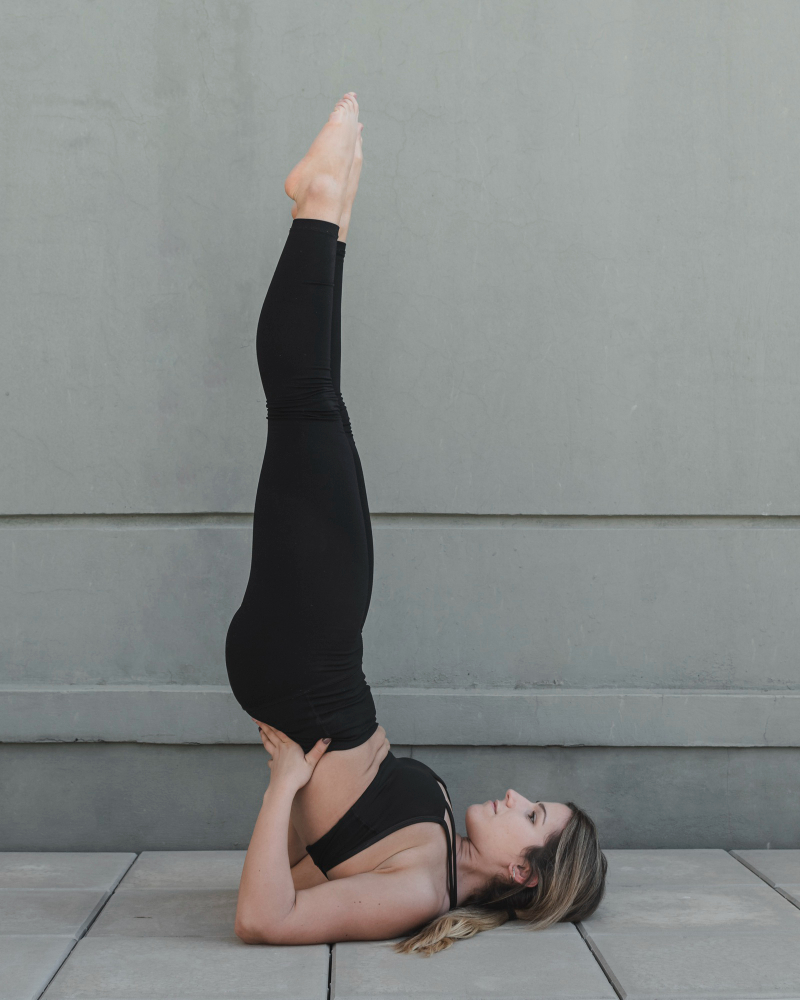Embarking on the journey of yoga often leads enthusiasts to explore advanced poses that not only challenge the body but also foster mental resilience. Headstand poses, also known as Sirsasana, stand out as a pinnacle in this exploration. In this article, we’ll delve into the intricacies of headstand poses, their benefits, the preparatory steps, and offer a step-by-step guide to help practitioners master this empowering yoga pose.
What are Headstand Poses?
Headstand poses, specifically Sirsasana, involve balancing the body on the head with the support of the forearms and hands. This inversion is not only a testament to physical strength but also requires focus, balance, and proper technique.
Benefits of Headstand Poses
Strengthening Core and Upper Body
One of the primary advantages of headstand poses is the profound impact on core and upper body strength. The engagement of abdominal muscles, shoulders, and arms promotes a robust foundation, contributing to overall body stability.
Improving Balance and Focus
The inversion aspect of headstand poses challenges the practitioner to refine their balance and concentration. Regular practice enhances proprioception, sharpening focus and cultivating a deeper mind-body connection.
Preparing for Headstand Poses
Warm-up Exercises
Prior to attempting headstand poses, it’s crucial to prepare the body through targeted warm-up exercises. These may include neck stretches, shoulder openers, and core activation to ensure flexibility and reduce the risk of injury.
Proper Alignment and Technique
Achieving the proper alignment and technique is fundamental to a successful headstand. Emphasizing the correct placement of the head, forearms, and hands establishes a stable base, minimizing strain on the neck and shoulders.
Step-by-Step Guide to Headstand Poses
Getting into the Starting Position
Begin with a solid foundation by placing the forearms on the mat, forming a triangle with the hands clasped. Rest the crown of the head on the mat, creating a stable tripod base.
Lifting the Legs and Finding Balance
Gradually lift the legs, bringing the hips over the shoulders. Focus on engaging the core and maintaining a straight line from head to toes. Finding balance is a gradual process; practice patience and control.
Maintaining the Pose and Breathing
Once in the headstand, maintain steady breathing. Deep, controlled breaths not only enhance concentration but also contribute to a sense of calm and composure.
Safety Tips and Modifications
Common Mistakes to Avoid
Avoid overarching the neck and straining the shoulders. Maintain a neutral neck position to prevent injury. Additionally, refrain from holding the pose for an extended period initially to prevent undue stress on the head and neck.
Modifications for Beginners
For those new to headstand poses, consider practicing against a wall for added support. This modification allows practitioners to build strength and confidence gradually.
Frequently Asked Questions
Can anyone do headstand poses?
beginner yoga headstand poses are accessible to most individuals, but those with neck or back issues should consult a healthcare professional before attempting them. With proper guidance and practice, many can gradually incorporate headstands into their yoga routine.
How long does it take to master headstand poses?
The timeline to master headstand poses varies among individuals. Consistent practice, patience, and attention to proper technique are key. Beginners may take several weeks or months to achieve proficiency.
Conclusion
Mastering headstand poses is not just a physical accomplishment; it’s a journey that integrates strength, balance, and mindfulness. By understanding the benefits, preparing diligently, and following a systematic approach, practitioners can confidently embrace this challenging yet rewarding yoga pose. Remember, progress in yoga is a personal endeavor, and each step brings a deeper connection between mind, body, and spirit.


